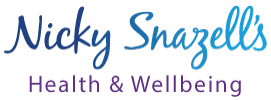Most people have heard of acupuncture and understandably assume that if a treatment involves a needle, it must be acupuncture. This is akin to saying that everybody who uses a knife must be a surgeon. Our task here is thus to look in depth at all the ways that needles are used, so that you better understand what the differences are and thus eliminate the confusion surrounding this type of treatment. By doing so, it will also hopefully help you gain confidence to try this form of treatment in the future and help you seek out the best type of practitioner for your problem.
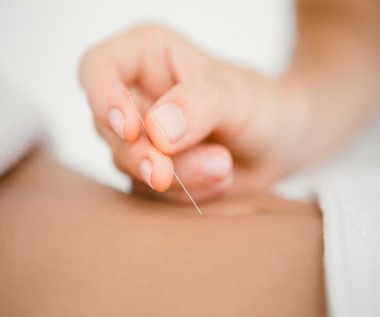
History
Historically, the use of the needle for treatment started in the east, most probably in China, many thousands of years ago. Thus, there have been thousands of years to refine and improve the understanding of acupuncture in Chinese Medicine, the latter being a complete medical system which looks at the whole body. It regards illness as the body being out of balance and thus seeks to identify why it is out of balance and then treats to redress this.
What Is Acupuncture?
Today's acupuncture uses very thin needles, much thinner than a hypodermic needle. These are inserted in the body at prescribed Chinese points which have a known therapeutic effect, or directly into an area of muscle spasm or pain. The needles are generally inserted and then left for anything up to 30 minutes.
Electro-Acupuncture
Electro-acupuncture was originally developed for use as analgesia in surgery. However, the benefits of electro-acupuncture were soon recognised for the control and treatment of pain. Research is still ongoing to better understand the best settings to use and the technology is thus continuously evolving.
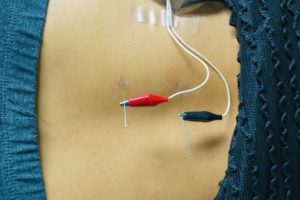
The equipment we use in house allows us to vary the settings to help you in the best way possible. It is understood that the use of different frequencies can stimulate the release of natural opioid pain killers in the body and that by using dual frequencies, both the intensity and longevity of the pain control can be varied.
A benefit of using needles with this type of electrical signal is that the pain relief can be applied at deep levels, within the muscles that are causing the pain.
Western Acupuncture
Western acupuncture as taught today is a small subset of Chinese acupuncture, combining needling to local areas of pain or spasm, 'Ah Shi' points, sometimes called trigger points, plus some use of Chinese points, but without reference to Chinese theory.
Needles are used in the same way as Chinese medicine and the types of needle are the same. The focus in western acupuncture is to link the treatment to western medical principles, which requires 'evidence based' justification. This is discussed below in the Acupuncture in the NHS section.
Chinese Medicine is a complete standalone medical system and is totally different to western medicine. By teaching and using Chinese acupuncture points, western acupuncture in effect has a foot in both camps.
Intra Muscular Stimulation - GunnIMS
The majority of acupuncture needling is performed at relatively shallow depths in the body. As explained above, the needles are inserted and left static until removed.
GunnIMS is completely different.
Professor Chan Gunn, a medically qualified Doctor, discovered GunnIMS by accident while carrying out tests in a laboratory in Vancouver, Canada. He found that patients were in pain, quite often long term, or chronic, pain, because of muscles being in spasm. In addition these muscles were not responding properly to the signals from the brain to expand and contract. He found that by inserting needles into these non-responding muscles, those same muscles could be made to release and start behaving normally. To effectively release a muscle he found that multiple insertions were needed, using the needle more as a microsurgical tool rather than a simple insertion device.
Eventually GunnIMS evolved to using an external device, called a plunger, which allowed the therapist to rapidly and easily retarget the needle to achieve the required result.
GunnIMS is fundamentally different to acupuncture
The results in treating muscle pain are far superior. It utilises western anatomical knowledge and makes no reference to Chinese Medicine. It generally requires much deeper needling and directly targets and micro surgically treats muscles in spasm. The training is thus totally different and only those practitioners trained through the Institute for the Study and Treatment of Pain (ISTOP), based in Vancouver, are qualified to provide GunnIMS. Nicky Snazell is one of only 3 practitioners in the UK to have reached the highest level of training and was awarded the first honorary membership of ISTOP in the world for her dedication to the use of GunnIMS.
Nothing Is Wrong
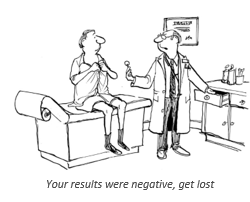
A major strength of GunnIMS is that it is unsurpassed in diagnosing and treating muscle spasm. Both MRI and X-ray cannot 'see' muscle spasm, it is totally invisible to these scans. Thus many patients who may have been in long term pain and given a scan, only to be told 'nothing is wrong' will now understand why.
Dry Needling
Dry needling refers to the use of a non-hypodermic needle. Acupuncture needles are solid, they cannot inject a drug. Thus they provide a dry and not wet treatment.
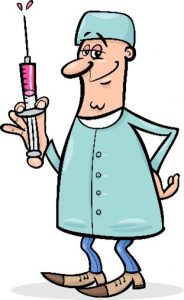
Hypodermic needles, which are used to inject drugs, are relatively much thicker and more painful to insert. This is perhaps why so many of us grow up with needle phobias.
It may at first seem that both acupuncture and dry needling are the same. After all they are both dry techniques. But there the similarities end. Whereas acupuncture is a traditional method developed thousands of years ago, dry needling is relatively new, only having been adopted in the last few decades.
Dry needling is primarily used to treat tight muscles, or trigger points, to ease muscular pain. In some cases the needles are inserted and left for a number of minutes. In some cases the needles are moved up and down to increase the effect.
The term Dry Needling is tending to replace GunnIMS as the teaching of dry needling is much more widespread. In many cases there is an overlap with GunnIMS. However, GunnIMS specifies that only Medical Doctors and Physiotherapists (in countries with the highest standards) are qualified to be trained, it also requires intensive training and passing exams. Dry needling courses can be attended by less qualified therapists and can involve little more than a weekends training.
Does Needling Hurt?
Our skin has a lot of nerves to sense touch, hot and cold, pressure and pain. However, once a needle has gone beyond the immediate outer layer, there are very few pain sensors.
A skilled practitioner understands this and will penetrate the skin very quickly, so that you would feel nothing more than a small prick. (no pun intended)
TCM will aim to penetrate to the layer of fascia where the patient gets a very definite sensation which is almost totally painless. Thus the majority of TCM and those western practitioners who use TCM points, will be almost totally painless.
The next level of needling is dry needling into tight muscles, or trigger points. This can cause pain, usually only slight and short lived.
Again, an experienced practitioner can use skills and technology to largely alleviate the pain response. Firstly, by using a therapeutic laser, which will generally penetrate up to 30mm into the body and greatly help to relax muscle spasm. In fact 'Laser puncture' refers to the use of a laser over TCM points, and can be helpful in treating patients without needles.
The second and more powerful technique to minimise a pain response is by first acupuncturing specific points which are known to minimise pain signals reaching the brain and others that will put the patient into a relaxed meditative state. This is no different to the same procedures used in China and now used in the USA for pain control in surgery.
A healthy, normal muscle has very limited ability to even realise a needle has penetrated it and in this situation a patient is unlikely to be aware at all. At times muscles will go into severe spasm and fail to respond to normal expand and contract commands from the brain. A very common example is low back pain and sciatica.
If you feel that acupuncture or GunnIMS could help you then please call us on 01889 881488 to book now.
Our staff capabilities are at the highest standard available in the UK.
